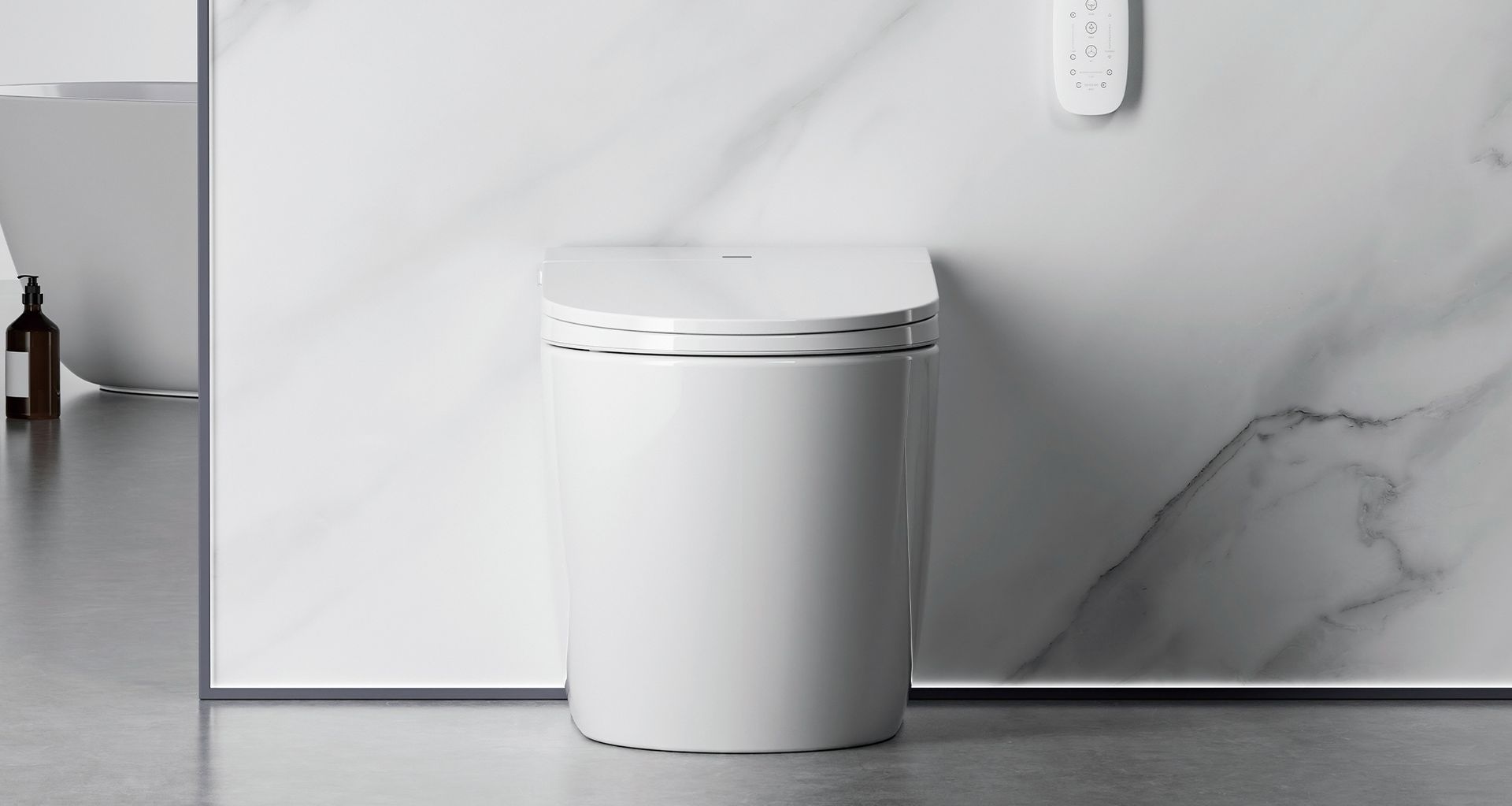Toilet dimensions: A sizing guide with FAQs

Whether you're embarking on a full bathroom makeover, or simply installing a new toilet, understanding the common toilet dimensions found in Australia is important. We’ve laid out the key measurements you need to know so you can ensure whichever toilet you choose fits your space.
1. What is the minimum size and standard size of a toilet in Australia?
While there isn't a specific minimum size for a toilet, the standard measurements range from:
- Depth: 686 - 765 mm
- Width: 508 mm
- Height: 350 mm to 410 mm
Sizes can vary depending on the type of toilet and any additional extras that are included in the design.
2. What is the standard toilet rough-in size in Australia?
In Australia, the standard rough-in size ("toilet rough-in" is the distance from the wall to the centre of the toilet's waste pipe. This measurement is essential for correctly positioning and installing the toilet in the bathroom) for a toilet is between 140mm - 165mm. However, sizes can vary based on the design of the toilet and the plumbing setup. If you're installing a wall hung toilet, for instance, you'll need to account for the different specifications.

3. What distance does a toilet need to be from a wall?
It’s a good idea to have at least 450mm on either side of a toilet from a wall for adequate comfort and ease of cleaning.
4. How far should a toilet be from a bathroom vanity?
For small, medium and large bathrooms, the recommended minimum space between a toilet and a bathroom vanity is between 500mm and 600mm. This provides easy access to vanity cabinets and sufficient space for cleaning. You can always have more space than this, but keep these figures in mind as a minimum.
Related article: 11 different styles and types of bathroom vanities

5. How do bathroom layouts affect the dimensions of a toilet?
Bathroom layouts greatly affect the dimensions of the toilet you can accommodate. Your available space and desired fixtures will dictate whether you need a compact or a standard-sized toilet.
Compact or wall-mounted toilets, known for their smaller dimensions, are an excellent choice for small bathrooms. These models are perfect for bathrooms where every square inch of space counts, enabling the inclusion of essential fixtures like a shower or bath.
For larger bathrooms with more elaborate layouts, standard-sized toilets are ideal. These models can comfortably coexist with additional features like a freestanding bath and most showers. However, even in a spacious bathroom, the dimensions of the toilet remain crucial in ensuring adequate space for easy access and movement.
6. How does the size of toilet affect other bathroom fixtures?
The size of your toilet can significantly affect the arrangement and choice of other bathroom fixtures. In the case of a compact bathroom layout, where every inch counts due to the presence of a smaller toilet, you might need to get creative. For instance, you could use a corner sink or a wall-mounted toilet to make the most of the limited space.
On the other hand, with standard-sized toilets found in larger bathrooms, you may have more room and flexibility to incorporate storage solutions such as vanity units, larger cabinets, and even additional fixtures like towel rails and a shower screen. Always remember that these elements should be placed in a way that does not interfere with the functionality of the toilet or restrict movement.
7. What are the standard bathroom dimensions in Australia?
The smallest functional bathroom, including a shower area, toilet, and hand basin, should be at least 1.5m in width and 2.4m in length. For a full bathroom with a bath, shower, toilet, and sink, you would need a space of approximately 2.4m in width and 3.0m in length.
The specific standards for toilet and bathroom dimensions in Australia can be found within the National Construction Code (NCC), which incorporates the Building Code of Australia (BCA). The NCC stipulates minimum requirements for design and construction for new buildings and renovations.
Related article: The pros and cons of different types of toilets

Understanding standard toilet dimensions for optimal comfort and fit
Creating a comfortable and functional bathroom requires careful planning and knowledge of standard dimensions and local regulations. While this guide provides a starting point, it's always a good idea to consult with professionals before starting your bathroom renovation project.
By considering these factors and ensuring your toilet and other fixtures fit comfortably within the available space, you'll be well on your way to creating a bathroom that meets your personal comfort and style preferences.
Discover a great range of premium quality toilet suites on ArchiPro
